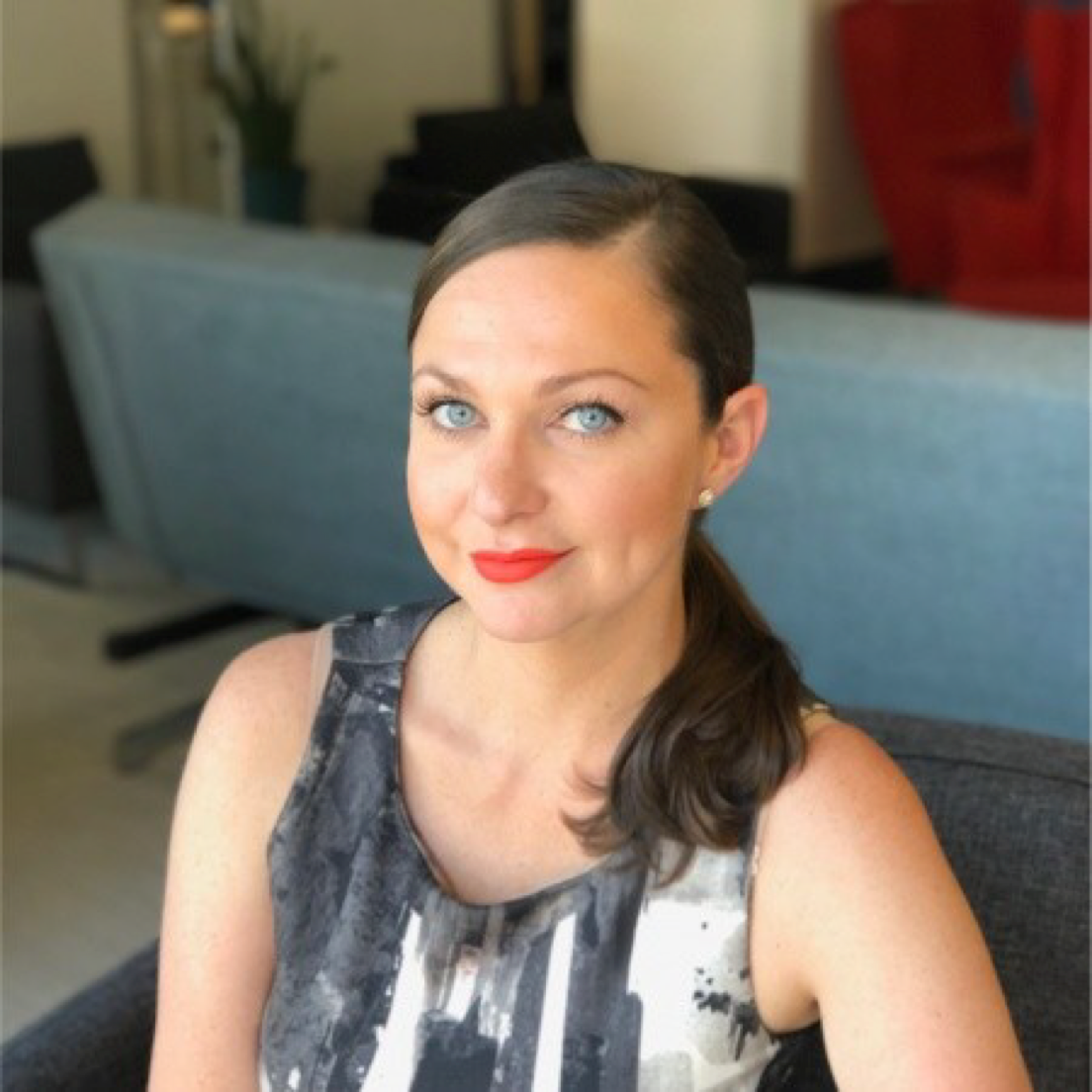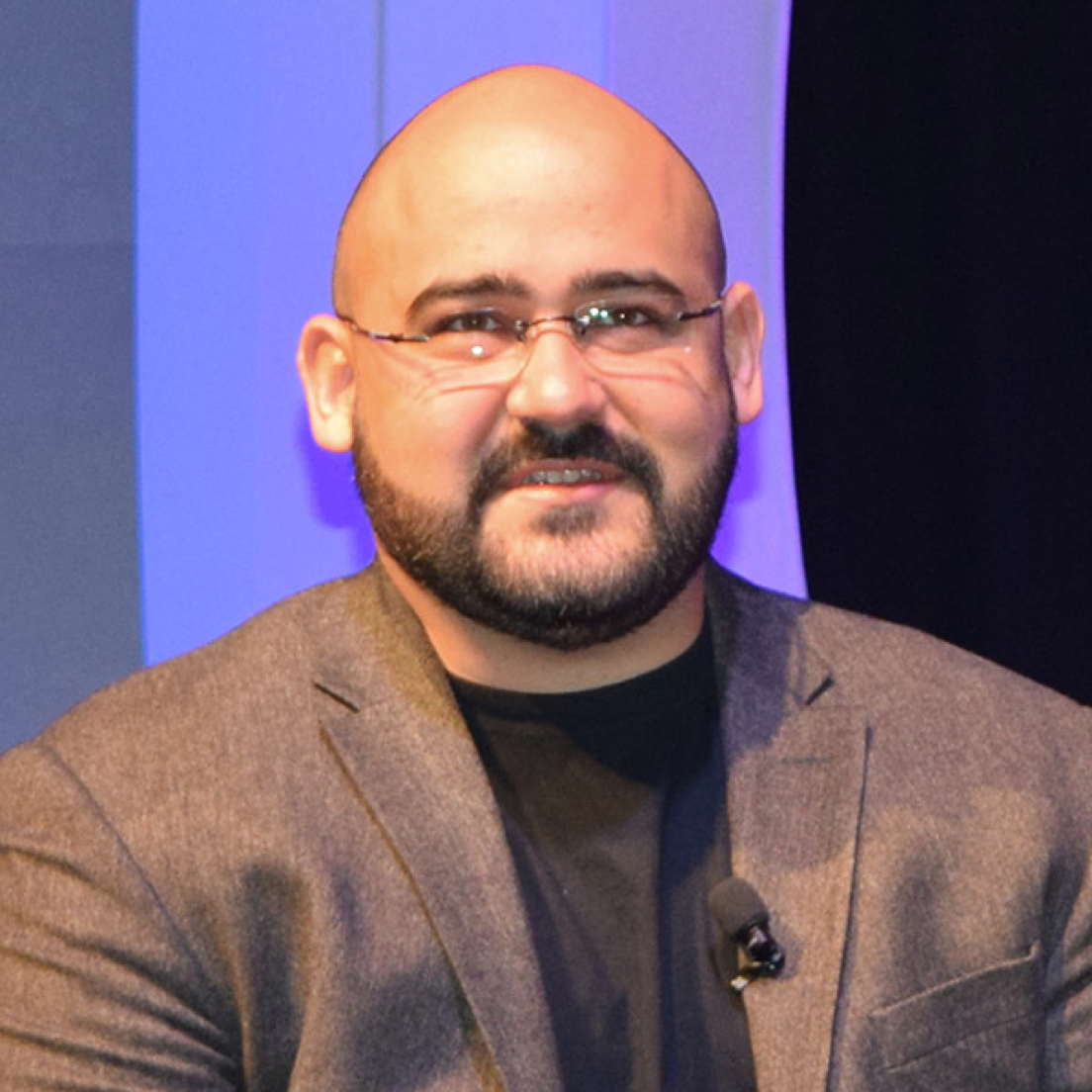About the episode
Holly Chen is the Group Growth Marketing Manager at Slack. Before that, she lead the website strategy for Google B2B, served as a product manager at Gucci, and even had a brief stint at the UN.
Holly joined host Matthew Kammerer to discuss how and when to invest in brand marketing, the B2C tactics that helped Slack grow super fast, and how her team is navigating the sometimes scary shift to mobile marketing.
You can connect with Holly on Twitter.
Don’t have 30 minutes to spare? Jump ahead to key sections outlined below, or keep scrolling for a full transcript of the episode.
- [03:29] How does a product management background help you as a marketer?
- [04:38] How does Slack use B2C tactics to acquire B2B users?
- [08:09] How do Google and Slack’s campaigns compare to those at smaller companies?
- [09:32] When should marketers invest in brand vs performance marketing?
- [12:04] How does Slack decide messaging for its brand and performance campaigns?
- [13:30] What’s your biggest tip for running successful campaigns?
- [18:58] What is Slack’s strategy with mobile marketing?
- [20:03] How are you measuring success with your new content marketer?
"The more playful ads actually perform much better than the more serious and corporate-y ones."
Episode is brought to you by
-

Matthew Kammerer
Show Host -

Vanessa King
Producer -

Joshua Schnell
Producer
Show Transcript
Matthew Kammerer: Thanks so much for joining us today. Holly, how did you first get started in marketing?
Holly Chen: I grew up in China, actually majored in Italian in undergrad in Beijing. Being one of the 24 people who did that every two years in the entire country thinking I’d be a diplomat for China. I realized that was not for me, so I came to the US for grad school in European studies. After working in the UN for a bit and realizing that wasn’t for me either, so I went to management consulting.
My projects mainly focused on using Clayton Christensen’s disruptive innovation and Jobs to be Done framework to create and launch new products for clients, and that got me really interested in technology and startups. So, I then joined a small internet startup to run their product and marketing, and then I worked at Gucci and then Google to lead their website strategy for Google B2B. And then demand gen and growth for Google hardware. And now at Slack.
Matthew: You’re currently the Group Growth Marketing Manager at Slack. What does your day to day look like?
Holly: My role evolved while I’m at Slack. I was first hired to run performance marketing. Back then, we were advertising on many platforms and publishers and didn’t really understand the overlap among them and the premium we paid. We used a last-touch model.
So I consolidated performance marketing to a centralized DSP and ad server. We implemented a custom multi-touch attribution model, built a team to focus on optimization, testing, measurement, and revamped the creatives and landing pages. So now, the performance marketing function became a well-oiled machine. I expanded my role to look at all of digital marketing and drive both brand awareness and user acquisition for Slack.
Matthew: Wow, that’s an incredible transition from where you started and where you are now. How long have you been there?
Holly: For about a year and a half.
Matthew: All that in a year and a half?
Holly: Yeah, you know, sometimes you think things don’t happen fast enough but it’s good to have to perspective sometimes.
Matthew: You touched on it before, but you’ve worked as a product manager at brands like Gucci and MySkin. Does that background influence how you approach marketing now?
Holly: Absolutely. That’s actually how I learned the importance of marketing. At the social commerce startup, we had amazing designers and engineers and created a great product, became the #1 skincare app in the App Store, entirely grew from word of mouth and organic channels. But we didn’t know how to put fuel behind that initial momentum and how to effectively acquire customers. We didn’t know how to grow to the next level, and that got me really interested in growth and decided to focus on growth marketing.
At the same time, the skills as a product manager I use every day in marketing today. Things like prioritization, avoiding scope creep, creating minimal viable product and plan, designing experiments, iterating fast, working with engineers and speaking their language. In reality, in the more technical projects like implementing attribution tools and systems, I was the product manager. I was creating the requirement docs, mapping out data flows, managing cross-functional partners from data engineering, IT, analytics, and external. So, especially as a growth marketer we often times play both product and marketing roles.
Matthew: Both of those brands are B2C. Does that experience correlate to the B2B strategies that you’re using now at Slack?
Holly: I found both B2B and B2C really interesting, and they share a lot of similarities. Ultimately, when we market to a business we’re still talking to a person. The person has hopes and dreams, and desires and fears, so understanding the customer is the first and foremost for both B2C and B2B.
I get a lot of inspiration from B2C marketing and creating fun and relatable campaigns, being efficient in user acquisition, and getting things to scale. And I think B2C marketing can learn a lot from B2B in terms of thinking about decision makers and who influences them and building out the funnel.
For Slack, it is actually a classic example of using B2C tactics to acquire B2B users. From acquisition channel perspective, most Slack users are first acquired from our self service option. We drive people to slack.com to learn about Slack, and it’s really easy to create a free Slack team to test it out. We actually use tons of B2C channels and tactics to acquire these users and that way our sales team already have a built-in pipeline of Slack teams ready to pay and expand vs the traditional B2B model of acquiring a customer through a sales team and they have to touch every customer. This has kept our overall acquisition costs low.
Matthew: That’s really interesting about Slack using B2C tactics to acquire B2B users. How does that style of marketing play into your campaigns?
Holly: B2B marketing is still marketing to people, like I said. We’ve at Slack developed customer segmentation based on user psychology versus the standard demographic and industries. We really put ourselves in the shoes of these different personas and their pain points and what they care about.
Our latest YouTube campaign is a great example of emotion-based marketing and the metrics far exceeds the benchmarks and our expectations.
Matthew: How is it different? Why do you think it’s exceeding it?
Holly: Obviously, there are specific creative best practices we follow. For example, capturing people’s attention in the first five seconds and having the brand show before the skip. But also just really cater to the pain point.
All of us have felt the pain of having an overwhelming amount of emails getting at us, and 20 different people chime in on long email threads and that frustration and that hopelessness. If our campaign can cater to that pain point and that need, that makes it more effective.
Matthew: As you said before, you’ve worked in marketing for Google and Slack. How do those marketing approaches compare to smaller companies?
Holly: Slack and Google share similarities but are in a lot of ways different. In general, bigger companies tend to have bigger budgets and more resources, so they’re able to leverage more costly marketing channels like paid media and dedicated events and all the marketing channels can complement each other in a more integrated way.
Whereas smaller startups often times don’t even have a marketing budget, and they need to heavily rely on organic channels. So, SEO, content marketing, and partnerships become a lot more important for smaller companies. You need to be scrappy and sometimes opportunistic to leverage what you have.
Matthew: Talking about dedicated events, it feels like Slack has just gotten started in those. Do you have influence in some of those dedicated events that are happening?
Holly: We support those events and our events team does a great job of putting those on often in short time frames. We do seem them impacting the sales pipeline in a great way. We’ve been supporting them in terms of driving registration and engagement afterwards as well.
Matthew: Say you’re not working for a big company. As a marketer, how do you decide when to invest in brand vs performance marketing?
Holly: That’s a good question. Brand marketing builds long-term equity and performance marketing benefits from the demand created by brand marketing. I would first focus on performance marketing to capture the low-hanging fruit and then when that becomes an efficient acquisition channel, I add on brand marketing to blow it up. And brand is costly and it’s hard to measure, so it’s critical that when there is brand companion market there’s a really solid performance marketing strategy to actually reap the benefits.
Matthew: When you look at examples of what Slack has done in brand vs performance, can you speak to one of those and how they work hand in hand?
Holly: When we run a brand campaign on TV, we need to measure if there is brand search lift on digital channels. We’re looking into using geo-focused approach so at locations where we show, for example, out-of-home advertising, we capture users around that geo-location and show them digital advertising that can actually capture and connect the dots between online and offline.
A lot of the brand advertising is on video, so we make sure to have companion banners and advertising and build out those different touch points and sequences so that we know when they’re first touched by a brand ad how do we follow up with performance ads.
Matthew: What does the timeline usually look like on that? Say you run a video ad or a commercial, and then you want to check impact on geo in that region. Is it within 30 seconds or within 3 days?
Holly: It’s within hours.
Matthew: And how do you know that?
Holly: Because we can actually measure search activity after a TV ad is shown.
Matthew: Do you do that in house or do you outsource to an agency?
Holly: There are partners that we work with to do that.
Matthew: Ok, awesome. So when you’re coming up with creative, how does Slack decide the messaging for brand vs performance campaigns?
Holly: For brand messaging, it’s really about evoking that emotion and creating that intrigue. So get that Slack brand in front of people and for performance, a lot of times we follow up with more concrete messaging about the benefits and pain points that we can solve in people’s lives.
Matthew: That’s cool. I see that in real time, and I see that in the way that people talk about Slack, so it’s neat to see what you’re doing on the paid side to affect what people are talking about on the person-to-person side.
Holly: Yeah, I think Slack is pretty unique in terms of the brand image and the creative strategy. It’s fun, it’s playful, it’s not stuffy, and people remember that. We’ve done research that the more playful ads actually perform much better than the more serious and corporate-y ones. So it does make a difference.
Matthew: Yeah I think of that business meme of that guy in his suit with his fist up in the air like, “Business!” No suits in your creatives. Whether it’s brand or performance, do you have any tips for running successful campaigns?
Holly: This is something that everyone knows but doesn’t always do. Know the goal and objective, why we’re doing this, what metrics to drive, and what success looks like. Is the impact big enough to justify the effort? Is the volume big enough to have significant insight? So, ask the hard questions before deciding to run this campaign. This will save you a lot of valuable time and allow you to be more focused.
Matthew: I know working with Slack, there are several metrics that we look to achieve when we’re running a performance campaign. What are those and do you have any north star metrics that you’re fond of running a successful campaign with?
Holly: Yeah, so it really depends on the objective, whether it’s brand awareness of user acquisition. What I would point out is to think of incrementality and ask if I don’t do this, what kind of impact would it have?
Matthew: And what are the best ways to start running incrementality studies?
Holly: You can do geo-holdout, you can do control-exposed. What’s really important is to think about the volume and whether you can actually have enough volume to have a statistic result.
Matthew: What channels have you found had enough volume for you to do that?
Holly: Obviously search is the first thing I would start with, and then go from there based on your highest volume channels.
Matthew: You’re not going to give away any secrets, huh?
Holly: Start with brand search!
Matthew: You’re currently hiring your first mobile marketer and it feels like mobile is something that everyone is afraid of. So many startups and tech companies that I’m talking to want to do everything but mobile. But we know more and more of our consumer base is moving to mobile-first. So, what’s your strategy with mobile marketing?
Holly: Yeah, we know that 70% of B2B buyers under 40-years-old and 50% of those over 40 use mobile before buying a B2B product. And we know that 50% of B2B queries are made on smartphones.
So, B2B buyers are becoming younger, and they are on mobile and we know that we need to be there. The challenge for B2B marketers is measurement. It’s difficult to tie desktop and mobile together. It’s hard to give proper credit to the research and activity on mobile, especially if you’re using a last-touch attribution model.
So if you look at desktop and mobile in isolation, the math may not work. We know the value of a user is much higher when they use Slack on multiple devices. So one of our key priorities this year is to map out that cross-device user journey and think about mobile more holistically.
Matthew: It’s crazy. This is a bit of a tangent, but when I’m working with marketers that don’t have advanced attribution, when they turn off a Carbon campaign after testing it for 30 days they say, “Well, we didn’t get any UTM sign ups. It was a flop.” Then they come back and they say, “Woah, we stopped running Carbon for a month and our organic conversions suddenly took a dip.”
So the conversation I’m using, and I’m curious what your opinion is, is often the marketing that we’re doing to very tech-savvy buyers is spurring a research-based decision. So infrequently is B2B made on the first impact and more of what we’re looking to accomplish is understanding if we can bring these ideas and tools top of mind when it comes to that board meeting or sitting at the table making these decisions where money is spent. Do you feel like that’s more where B2B marketing falls and we need a better way of measuring it, or do you think it’s happening in a different way?
Holly: Slack actually went through this a little bit, not intentionally. In 2016, before my time, we actually spent less on performance marketing and switched from a multi-touch to a last-touch model. Inevitably, we saw growth slowed but from just pure last-touch perspective the numbers were pretty good. So we knew that something was wrong. That’s when we realized we needed to invest in performance marketing even though the measurement isn’t perfect but we can get close enough to feel that we are driving tangible impact.
Matthew: How do you convince executives that close enough is good enough?
Holly: We definitely went through an evolution of building that trust. What I try to do is to ask those hard questions before anyone else and be proactive in running these incrementality studies so that we have data to prove that there’s value in running certain channels.
Matthew: So hopping back to that mobile marketer, when you’re looking at firing up your mobile marketing engine, what’s your strategy there in terms of approach?
Holly: For mobile, we will start with the big three: Google, Facebook, and Apple. And establish that benchmark and baseline and the different touch points. For us, the priority is really mapped out that cross-device user journey. With these three big channels, we can already get a lot of good data to do that.
Once we prove that mobile has value not only from acquisition but from an LTV perspective, we can scale it up into other publishers.
Matthew: The last one you said is kind of surprising to me. Are you looking at doing promoted app ads in the App Store or is there another touch point?
Holly: No, just regular Apple search ads to start.
Matthew: You’re also hiring a content marketer. What’s your strategy for measuring success of that role?
Holly: So far, we’ve very much focused on the self-service option to encourage people to create a free Slack team, but as Slack expanded to enterprise customers, they need a higher touch and longer nurture path, so content becomes more critical in this funnel so we’re investing more this year into content syndication and building out that nurture flow.
Matthew: What sort of content syndication?
Holly: We’re still figuring that out. We do know that traditionally B2B marketers tend to have gated content but at the same time, non-gated content offers value. The goal of the content campaign is mainly to create that trust with our potential customers. We don’t necessarily need an email address to later market to them. If they're not willing to even create a free Slack team to start because it was so easy, then that means they probably don’t have that trust yet to even be open to be marketed to. I think we’ll test it out and let the numbers tell us what’s the best approach.
Matthew: With content or performance campaigns, how is your team’s performance communicated with the rest of the company?
Holly: We’ve come a long way. We went from manually entering metrics by channel by day into a Google sheet to fully automating the reporting every week to communicate across Slack and partners. In our reporting, we not only report numbers but also insights. Why something happened, what we’ve learned, including the failed tests. That really helps us to learn and grow fast. We obviously use Slack to communicate our performance. The whole company can see it, it’s great.
Matthew: So, that’s just posted weekly and then people respond with a bunch of raised hands and rocketship emojis? What’s the process like from there?
Holly: Dancing penguins, and dancing bananas.
Matthew: That’s actually a good question—what’s your favorite custom emoji? Do you have one?
Holly: So it’s called Sonic Run. I don’t know if it’s a custom emoji or if it’s built in. Every week with our weekly reporting we use sonic run as our team emoji. It means we’re running fast and never stop.
Matthew: Thanks so much for diving deep into campaigns there. Final question: what’s your best advice for B2B marketers looking to grow in their careers?
Holly: I’d say get comfortable with data. Measure everything, ask why, and learn as much as you can from your cross-functional partners. It may come in handy in surprising ways later on in your career.
Matthew: Thank you so much. I really appreciate your time, Holly. It’s been so exciting hearing what’s going on over at Slack and I look forward to seeing Slack continue to grow.








